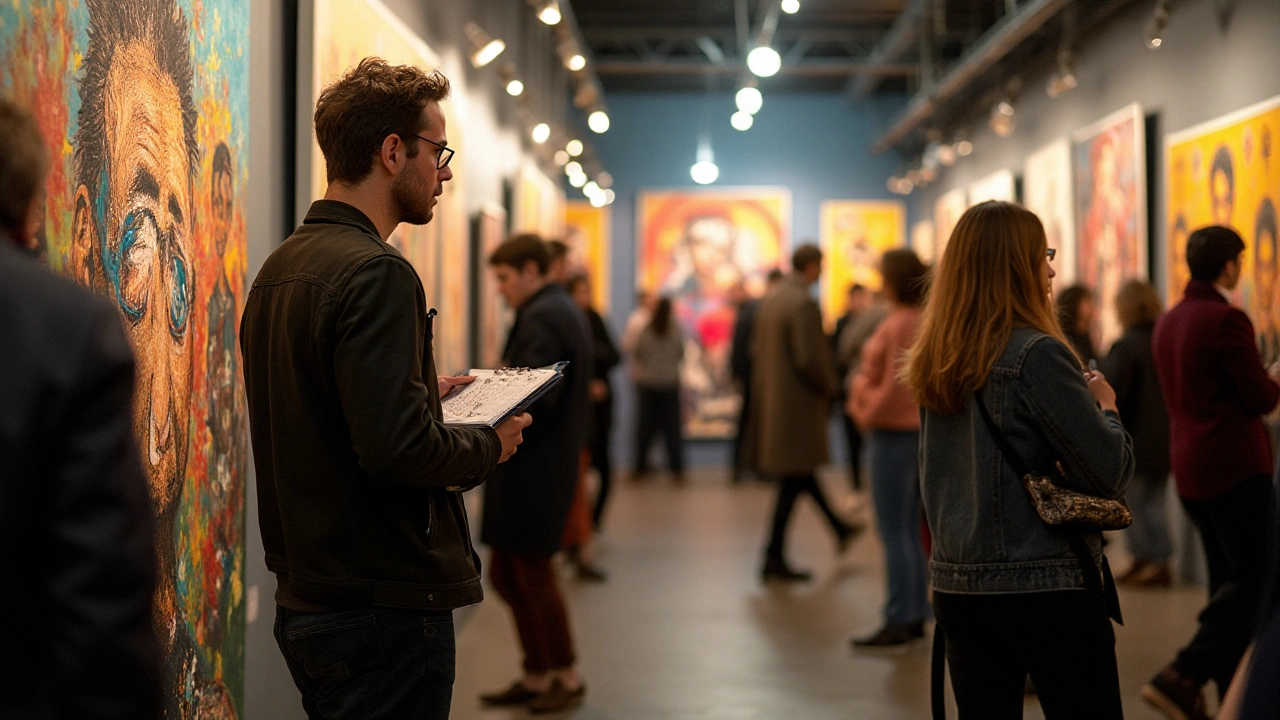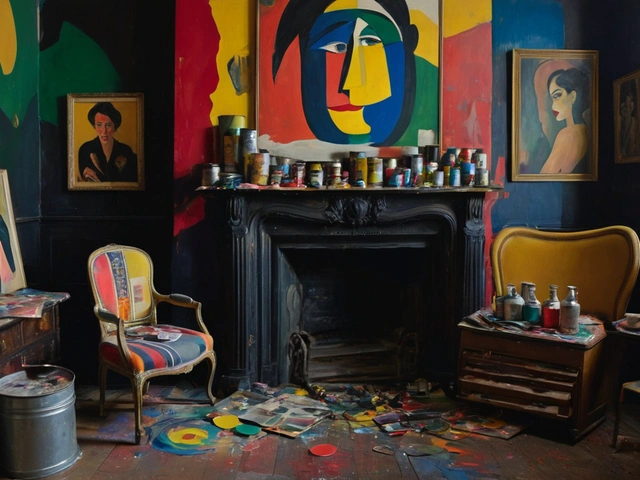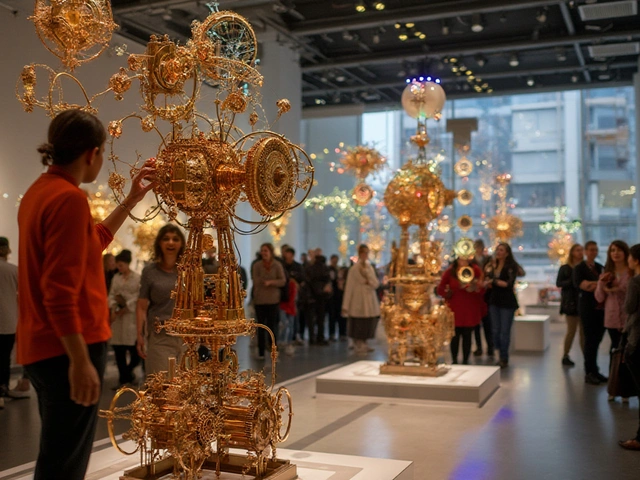In the twilight of the 19th century, a new wave of art emerged, stepping boldly into the vast world of emotions and veering away from the precise realism that had defined much of art's history. Expressionism, as it came to be known, broke free from the constraints of traditional techniques, opting instead to portray the raw and often tumultuous depths of the human experience.
In cities like Berlin and Vienna, artists began to push past the boundaries of what was typically expected of visual art. They wielded their brushes to vent not just the beauty they observed, but the turmoil, joy, and despair woven into the fabric of everyday life.
What set Expressionism apart was its uncompromising commitment to conveying emotional experience over photorealistic portrayal. Through bold colors, distorted forms, and dynamic, often aggressive brushwork, Expressionist artists turned their internal worlds into visual narratives, inviting viewers to experience the intensity of their feelings.
- Origins of Expressionism
- Pioneering Painters and Their Technique
- Symbolism and Themes
- Impact on Modern Art
- Expressionism in Popular Culture
- How to Appreciate Expressionist Art
Origins of Expressionism
The genesis of Expressionism is often traced back to the late 19th and early 20th centuries, a time of significant upheaval and transformation across Europe. This period marked a turning point when traditional structures were being questioned, and artists sought to capture the profound sense of alienation and dislocation felt amidst rapid industrialization and socio-political changes. Inspired by such emotive dissonance, many artists began breaking away from the constraints of realism, choosing instead to emphasize subjective experiences, often involving intense emotional responses. The movement gained momentum in Germany, as part of a broader rebellion against conservatism in the arts, resulting in an explosion of creativity that challenged the status quo.
The notion of prioritizing emotion over form wasn't entirely new to the art world. Historical artistic movements like Romanticism had also explored emotive themes, but what distinguished Expressionism was its boldness and radical intent to distort reality for emotional effect. This was a time when Sigmund Freud's theories on the unconscious mind were gaining popularity, influencing how artists viewed and portrayed internal psychological landscapes. Distinct groups like Die Brücke (The Bridge), founded in Dresden in 1905, and Der Blaue Reiter (The Blue Rider), formed in Munich in 1911, began to crystallize Expressionist ideas and aesthetics. Their use of exaggerated forms, vivid colors, and dramatic compositions conveyed the angst and ecstasy of the human spirit in a way that felt viscerally raw.
While prominent artists like Edvard Munch and Vincent van Gogh are often credited with prefiguring the Expressionist style through their intense, expressive brushwork and emotionally charged subject matter, it was the upheavals of the early 20th century that set the stage for Expressionism to flourish. This was a Europe constantly on the brink of conflict, leading up to and during World War I. Leo Tolstoy, reflecting on this tumultuous era, wrote, "Art is not a handicraft, it is the transmission of feeling the artist has experienced." Expressionists took this philosophy to heart, using their canvases to reflect the turbulence of their world and their innermost emotions with unparalleled intensity.
Pioneering Painters and Their Technique
Amidst the cacophony of the early 20th century, certain artists came to the forefront, revolutionizing the art world with their keen explorations of human emotion. These pioneering painters of the Expressionist movement challenged the norms and opened new vistas in creative expression, leaving indelible marks on the landscape of emotional art. Every brushstroke, bold hue, and daring composition revealed an artist’s internal dialogue, translating invisible thoughts into vivid visual experiences. Among these trailblazers, Edvard Munch's 'The Scream' exemplifies the core of Expressionism. Its swirling skies and anguished figure encapsulate existential dread, employing distorted forms and vibrant colors to transcend the boundaries of ordinary perception.
Edvard Munch: The Harbinger of Emotion
Edvard Munch, a Norwegian painter, is often considered the progenitor of Expressionist sentiment. Deeply affected by personal tragedies and existential philosophies, Munch's work delved into themes of love, fear, and human mortality. His technique involved using elongated brushstrokes and intense hues to mirror the emotional landscapes he experienced. Munch’s daring attempt to portray psychological states through visual art paved the way for subsequent artists to harness emotion as their primary tool. Franz Marc, a member of the German Expressionist group Der Blaue Reiter, embraced a slightly different approach, depicting animals with striking color combinations to convey deeper meanings about humanity and nature.
Die Brücke and Der Blaue Reiter: A Symbiotic Influence
German groups like Die Brücke and Der Blaue Reiter played pivotal roles in shaping the Expressionist narrative. Die Brücke, formed in Dresden, emphasized a raw and direct style that confronted the emotional unrest triggered by rapid industrialization and societal changes. Artists like Ernst Ludwig Kirchner harnessed dynamic and distorted forms to reflect both personal and communal anxieties. Meanwhile, Der Blaue Reiter, which included Wassily Kandinsky and Paul Klee, skewed towards spiritual and abstract elements, probing into the mystical underpinnings of human consciousness. Kandinsky’s embrace of abstracted form aimed at engendering a transcendent response from viewers, demonstrating the versatility within Expressionism’s broad embrace of human experience.
"A painting should be fertile; it must give birth to a world." - Paul Klee
Such was the whimsical yet profound assertion by Paul Klee, a statement that encapsulates the transformative power Expressionists sought to wield through their art. At a time when society faced unprecedented change and hardship, Expressionism allowed painters to tap into a universal human psyche, channeling personal chaos, cultural discontent, and philosophical musings onto their canvases.
Techniques that Broke and Remade the Mold
Expressionist techniques were as varied as the emotions they aimed to depict. Bold, often unnatural color palettes served to heighten emotional impact, a method prevalent in works across the movement. Contrast this with the traditional realism of previous eras, and the divergence becomes stark. Thick, often frantic applications of paint, seen largely in oil media, conveyed immediacy and urgency. The emphasis on distortion—whether in figure rendering or in perspective—signaled an intentional departure from naturalistic portrayal. This was not a rebellion for rebellion’s sake; rather, it was a purposeful strategy to put emotion at the forefront, using formal elements as tools for psychological investigation.
As these Expressionist painters engaged with innovative techniques, their impact on modern art became undeniable. Whether through oil on canvas or more revolutionary means like printmaking, their work questioned and expanded the horizons of what art could achieve. This profound legacy continues to resonate today, influencing countless artists who strive to express the inexpressible, capturing unseen emotional currents within their works.
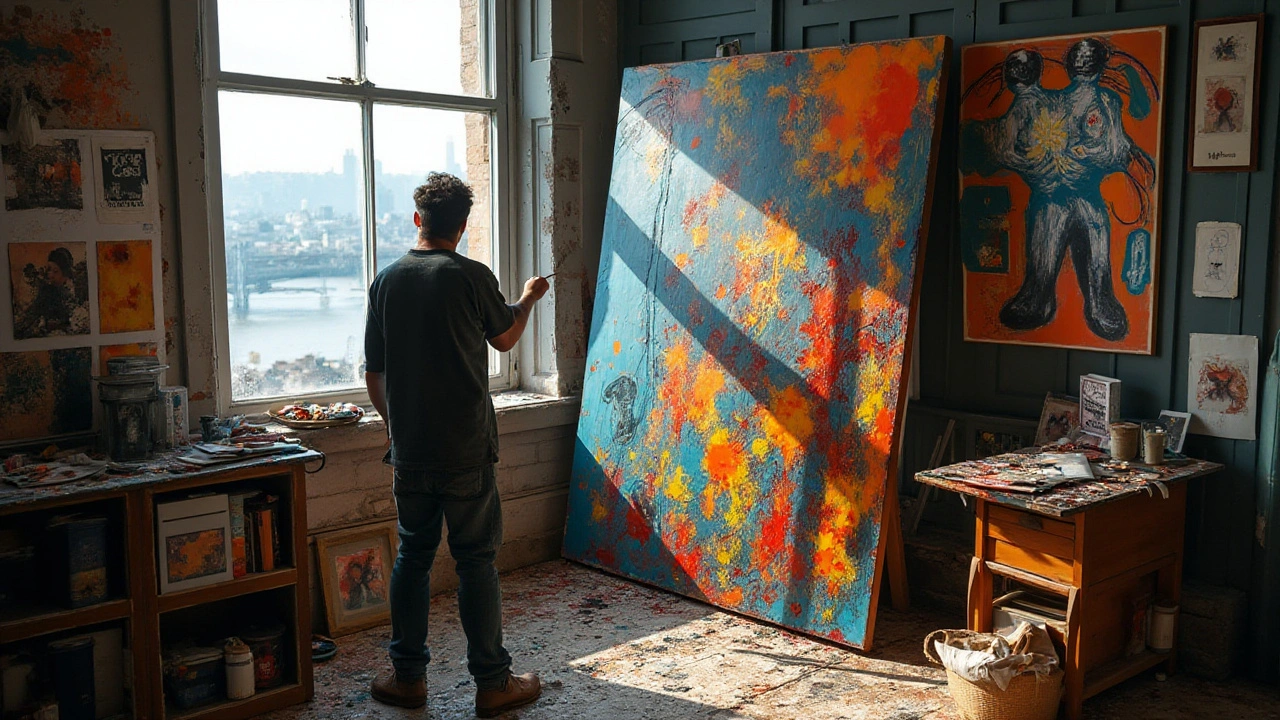
Symbolism and Themes
Expressionism, distinct in its form and approach, thrives on the emotional power encapsulated within its bold strokes and audacious colors. This movement, by its very nature, breathes life into subjective experiences, crafting visuals that echo the tumultuous inner lives of both the artist and their audience. Themes such as existential angst, the clash of modernity and tradition, and the human condition dominate these extraordinary works. Artists often encapsulated feelings of alienation, despair, or even hope through symbolic imagery that might be grotesque or sublime, reflecting not only personal internal struggles but also broader societal anxieties.
Color, a potent tool for expressionists, is wielded with wild abandon to invoke emotions rather than mimic reality. This liberation from the natural palette allows paintings to vibrate with an intensity that draws the viewer into the psychological realms they seek to uncover. Consider the haunting works of Edvard Munch, whose iconic piece 'The Scream' employs swirling lines and unnatural hues to reflect the agony of anxiety and despair. His strategic use of color amplifies the screaming figure’s sense of anguish against a backdrop of an unnervingly turbulent sky, creating an atmosphere that invites viewers to feel as much as to see.
The Influence of Societal Tumult
The unsettling shadows of World War I greatly influenced expressionists, embedding themes of conflict, fragmentation, and reconstruction into the prevailing visual narratives. These artists reflected society's collective trauma through disfigured forms and oppressive environments. Fritz Lang’s 1927 film 'Metropolis', though cinematic, shares the visual language of expressionist art, using light and shadow to starkly comment on industrial dehumanization. In these contexts, expressionist art becomes a reflection of an era’s vulnerability, channeling the deep disquiet pervasive in countries undergoing rapid modernization.
"The act of painting is about one heart telling another heart where he found salvation." — Francis Schaeffer
Animals and nature, often distorted to embody these themes, also play potent roles in expressionist symbolism. The works of Franz Marc are a testament to this, where vibrant animals often stand in for human states of mind, conveying purity or innocence lost in the chaos of burgeoning industrial landscapes. His use of dynamic compositions and striking colors suggests an almost spiritual journey, a quest for harmony amid the discordant clangor of the modern world.
Religious imagery and spiritual quests frequently occur in this mosaic of symbols. Despite varying by region and personal belief, expressionists often grappled with the sacred versus the profane within their work, challenging and redefining religious iconography. This can be seen in Emil Nolde's vivid canvases, where scenes from religious narratives are saturated in a palette that ignites fervor, merging the divine with the immediate earthly struggles depicted therein. In doing so, Nolde's artistic expressions bridge the gap between personal belief and universal human experience, inviting both solemn reflection and contentious debate.
Impact on Modern Art
The reverberations of Expressionism have had a profound impact on modern art, influencing generations of artists who sought to tap into the same emotional intensity and rawness that characterized the movement. The bold techniques of Expressionist artists have transcended their early 20th-century origins, leaving a lasting imprint on numerous modern art styles, such as abstract expressionism, neo-expressionism, and even contemporary digital art. This transformation from the literal to the emotional opened new avenues for artistic expression that continue to inspire and provoke today.
One of the most significant outcomes of Expressionism's influence is the way it empowered artists to explore personal and societal themes unencumbered by aesthetic conventions. By placing emotion at the forefront, Expressionism allowed for a more intimate engagement with topics such as inner turmoil, political upheaval, and existential dread. This legacy can be seen in the works of modern artists who challenge viewers not only with their technique but also with the depth of their messaging. The expression of emotion became a universal language, transcending cultural and geographical boundaries.
Looking at the canvas of today, you'll find echoes of Expressionism in the abstract swirls of artists like Mark Rothko or the chaotic energy emanating from Jackson Pollock's drip paintings. These modern interpretations carry the spirit of Expressionism, as they both blur and redefine the line between emotion and form. Emerging technologies like digital art platforms have also embraced expressionism, with creators utilizing virtual tools to further explore this emotional depth in entirely new dimensions. Such digital innovations extend the reach of this enduring movement, ensuring its principles thrive amidst rapid technological changes.
The impact of Expressionism isn't limited to just painters. It has also made its mark in cinema and theater, where directors and writers use stark visuals and exaggerated performances to evoke mood and meaning. This interdisciplinary crossover showcases Expressionism's vast reach and its capacity to resonate across various forms of media. The technique of using emotional manipulation to provoke intense visceral reactions in audiences, initially an Expressionist strategy, now serves as a common method across many creative fields.
Expressionism's influence on modern art isn't just about pushing creative boundaries; it's about the profound change in how art communicates. As Paul Klee, a notable figure once said, "Art does not reproduce the visible; rather, it makes visible." This quote encapsulates the essence of Expressionism's enduring legacy. By shattering the norms of representation, it set the stage for movements that promise to continue challenging and expanding the perceptions of their respective audiences.
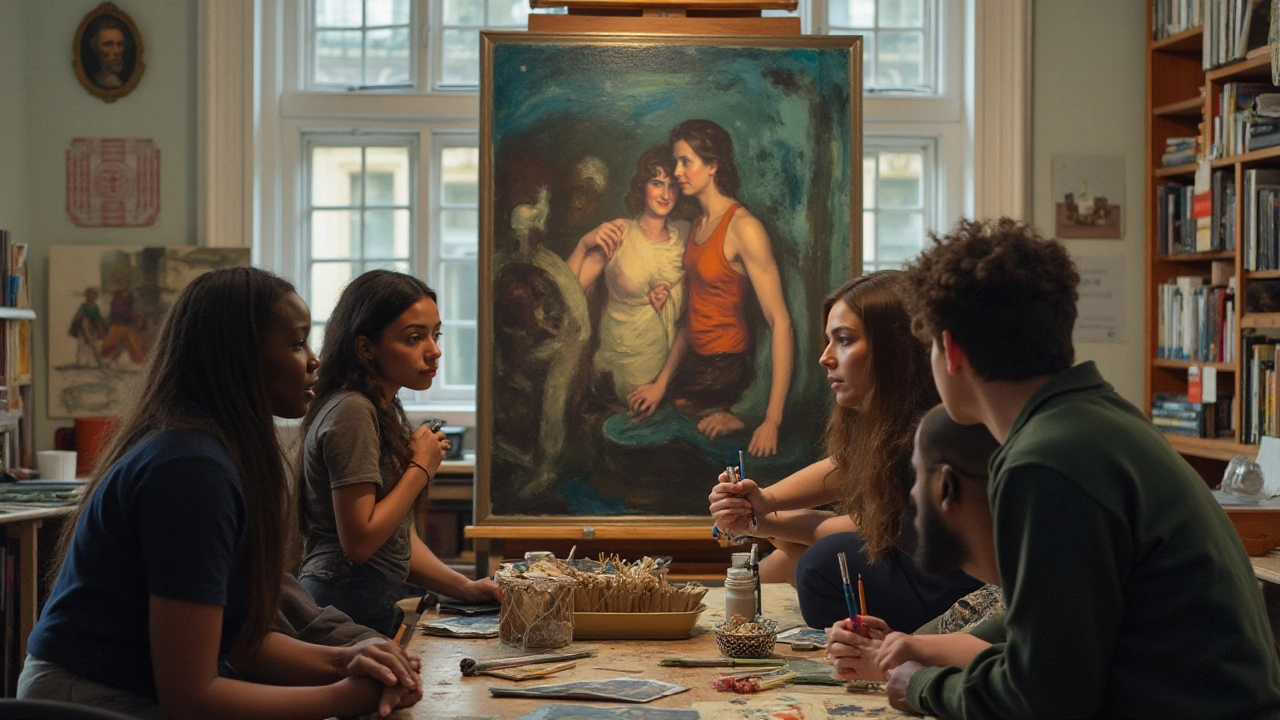
Expressionism in Popular Culture
Expressionism has spilled beyond the confines of galleries and art textbooks, becoming a vibrant source of inspiration in popular culture across the globe. From movies and literature to music and theater, the deep emotional currents and distinctive visual language of this artistic movement resonate loudly. In cinema, filmmakers such as Tim Burton and Guillermo del Toro have been deeply influenced by the distorted visions and intense emotionality characteristic of Expressionism. Their works often feature exaggerated settings, haunting characters, and striking contrasts that evoke a similar sense of emotional unease and excitement sparked by Expressionist paintings.
Literature has also felt the pull of this art form. Influenced by Expressionist themes, authors channel inner turmoil and explore complex human emotions through evocative and often unsettling prose. Writers draw from the boldness of Expressionism to craft narratives that delve deep into the human psyche. Franz Kafka, though often grouped in with existentialist writers, shares much with Expressionist ideals. His works tap into the absurdity and angst of human existence, a hallmark of the movement.
"No masterpiece was ever created by a lazy artist" — a sentiment that reflects the fierce passion and discipline that Expressionists invested into their work, permeating every corner of popular culture today.
In the arena of music, the impact of Expressionism can be heard in the works of composers like Arnold Schoenberg, whose atonal compositions challenged traditional notions of melody and harmony, much like Expressionist painters challenged visual norms. The psychological unrest and emotional intensity embedded in his music mirror the jagged brush strokes and haunting figures of Expressionist art.
Even theater has incorporated Expressionistic elements extensively. Known for its exaggerated gestures and stark lighting, Expressionist theater inspires many contemporary performances that strive to communicate internal states and emotions as vividly as possible. Directors and playwrights often push the boundaries to create immersive, thought-provoking experiences that reflect the human condition with unflinching honesty. In television, series that focus on intense personal and societal challenges often adopt an Expressionist edge, using dark palettes and dramatic camera angles that evoke the bold spirit of the art form.
As popular culture continues to evolve, the essence of Expressionism endures, finding new forms and reaching fresh audiences. Whether through visual media, music, or performance art, the movement’s emphasis on channeling raw emotion and deep introspection ensures its place as a perennial force in shaping cultural landscapes. Its emotional power remains, resonating with anyone who dares to engage with the intensity of the human experience, making it as relevant today as it was at its inception.
How to Appreciate Expressionist Art
Expressionist art, with its bold departure from traditional visual aesthetics, invites the viewer into a world where emotions reign supreme. To truly appreciate this art form, it helps to understand the context and intentions behind its creation. Delve into the vibrant history of the Expressionism movement that emerged in the early 20th century as a response to societal upheavals and personal turmoil. The key to appreciating expressionist works lies in recognizing the combination of subjective emotion and intense personal reality that these artists aimed to convey. It's about feeling more than seeing, understanding the turmoil or ecstasy that a seemingly chaotic composition seeks to express. Visiting exhibitions and reading about the socio-political landscape of the time offers deeper insights into the works of artists like Edvard Munch and Egon Schiele, whose haunting images and vivid colors continue to stir emotions today.
When viewing an expressionist painting, the colors and forms will often appear exaggerated, yet this distortion is intentional. It serves to reflect inner experiences rather than external realities. Focus not only on what is depicted but how it's shown. Take Edvard Munch's The Scream as an example; the swirling colors and distorted forms were designed to evoke the anxiety of the modern age. Embrace this unconventional beauty by allowing yourself to respond emotionally. Each brush stroke, each tilt of the hue speaks a language of its own—one that transcends logic and narrates a profound emotional depth. Expressionism can be as much about the reaction it elicits as it is about intellectual understanding. As you stand before such a piece, give in to the visceral reaction it evokes, allowing yourself to navigate through its emotional labyrinth.
Finding the Emotion in the Chaos
One effective way to appreciate expressionist art is by exploring the underlying themes of human suffering, love, alienation, and ecstasy. Recognize the personal stories embedded within the strokes. Many Expressionist artists aimed to highlight the alienation and anxiety of contemporary life. Tapping into these themes can provide a gateway into understanding their work. While abstract at first glance, these pieces have embedded currents of meaning that often culminate in a tangible narrative. Engage with the artwork by considering what personal emotions or memories it provokes. Does it stir something from your own life? Sometimes, the subject matter itself can serve as a diary, detailing the artist’s journey through the human condition.
"Art is not a mirror held up to reality but a hammer with which to shape it," said Bertolt Brecht, echoing the transformative power these artists believed their work held.
As you journey into the world of expressionist art, remember that its power lies in its emotional resonance. Whether through a distorted figure or an explosive color palette, every piece seeks to communicate more than just visual pleasure. Make a habit of visiting art galleries that house expressionist collections, participate in discussions, or join art appreciation groups. As you continue to develop your understanding, you'll discover that these pieces transcend the physics of paint and canvas, offering instead a rich tapestry woven from the threads of human emotion and creativity. Let expressionism take you on a voyage not only to the artists' internal worlds but also into your own depths.

